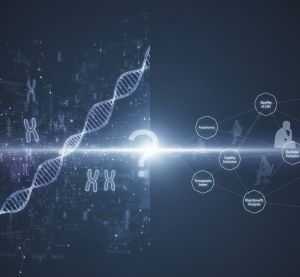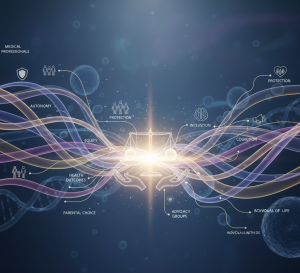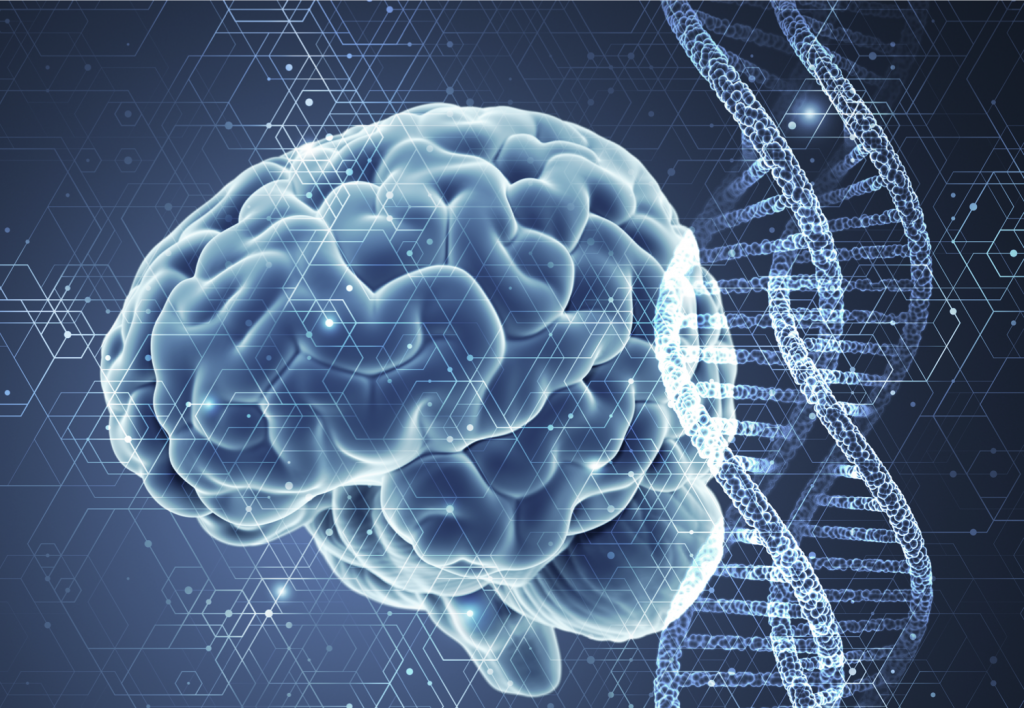Down syndrome (DS), or trisomy 21, is the most common chromosomal condition associated with intellectual disability. DS affects approximately one in every 700 births in the United States. This is caused by an extra copy of chromosome 21, which increases the activity of hundreds of genes becoming overactive, affecting brain development, heart function, and present immune system challenges. People with Down syndrome are living longer, healthier, and more independent lives than ever before. Even so, scientists continue to explore new ways to better support their health by studying the genetic root of the condition—an extra copy of chromosome 21.
In recent years, one of the biggest breakthroughs in genetics has been the development of CRISPR-Cas9, a tool that allows researchers to make precise edits to DNA. What started to fix single genes has now expanded into much more ambitious possibilities. Scientists are investigating whether CRISPR could one day remove or deactivate the additional chromosome entirely, a concept known as “trisomy rescue.” This approach is still early in development, but it represents a major shift in how researchers think about treating conditions linked to extra chromosomes. More precisely, researchers are investigating allele-specific CRISPR-Cas9 systems designed to selectively cut and selectively eliminate the extra chromosome 21 in human cells without damaging the essential two copies required for healthy function (Hashizume et al., 2025; Li et al., 2023).

This potential breakthrough highlights considerable and significant ethical questions: What does it mean to “correct” a chromosomal variation deeply connected to identity and community? How do we improve health outcomes for people with Down syndrome without sending the harmful message that their lives need “fixing”? This question is at the center of today’s gene-editing conversation. In this paper, I look at the latest research on CRISPR-based trisomy rescue and discuss the major ethical concerns that come with applying this technology to Down syndrome.
Down syndrome, or trisomy 21, begins with a mistake during cell division called nondisjunction. When chromosomes do not separate as they should, a person can develop with a third copy of chromosome 21. That extra DNA changes how genes are expressed—often raising activity by about 50%—and this contributes to many familiar features of Down syndrome. Current medical treatments can help with individual health challenges, like heart defects or low muscle tone, but they cannot address the genetic imbalance itself. CRISPR-Cas9, a gene-editing tool originally discovered as part of the bacterial immune system, allows scientists to make precise cuts in DNA. By targeting unique DNA differences, researchers can aim Cas9 specifically at the extra chromosome while protecting the two needed copies (Li et al., 2023). This represents a huge step forward compared to older techniques, which risked damaging healthy chromosomes and creating permanent harm.
In laboratory studies, introducing several cuts into the third chromosome causes it to become unstable and eventually disappear as the cells divide. This process, known as trisomy rescue, has successfully restored a normal chromosome number in cultured cells (Hashizume et al., 2025). While still early in development, these results show that chromosome-level therapy could one day be possible.
Recent research has focused on designing CRISPR-Cas9 systems that can more accurately target and remove the extra chromosome 21 responsible for Down syndrome. One major strategy involves making multiple targeted DNA breaks in the supernumerary chromosome. In a study using trisomy 21 induced pluripotent stem cells, researchers successfully removed the extra chromosome without disrupting normal cellular function and stability. Importantly, these corrected cells retained their ability to differentiate into multiple tissue types which is a crucial factor for therapeutic success for future clinical applications (Nishiyama et al., 2022).
A second promising development has extended allele-specific editing into cells directly derived from individuals with Down syndrome. Hashizume et al. (2025) showed that CRISPR could be designed to recognize and cut only the extra chromosome 21 in cells taken from people with Down syndrome. Once that third chromosome was damaged, the cells were able to divide without it. This gives the clearest indication so far that trisomy rescue could someday work in human development, especially early on when there are far fewer cells that would need to be corrected.
Researchers also believe this strategy might be useful beyond Down syndrome. For example, Li et al. (2023) reported that the same idea—targeting a specific chromosome for removal—could potentially help treat other chromosomal disorders, like trisomy 18 or even some cancers where abnormal chromosome numbers drive tumor growth. This means trisomy rescue could eventually have wide-ranging medical applications, not just in one condition.
Even with this exciting progress, all the studies so far have been limited to experiments on cells in the lab. There have been no attempts to use this approach in a developing embryo, a fetus, or a living person, largely because the safety concerns are still too significant. Moving from cell cultures to real human treatment raises huge scientific challenges and serious ethical questions that must be carefully addressed before any clinical use could be considered.
Beyond addressing physical health challenges, correcting the extra chromosome could also have an impact on how the brain develops. When chromosome 21 is present in three copies, certain genes are overexpressed, which can influence how brain cells form connections, how neurotransmitters are regulated, and how the nervous system develops early in life. Because of that, some researchers predict that trisomy rescue might support improvements in learning, memory, or communication skills. The goal of this work isn’t to take away a person’s identity, but rather to remove obstacles that interfere with independence and everyday functioning (Tang et al., 2021). If treatment occurred early enough, it could support developmental milestones such as clearer speech, better motor coordination, or increased cognitive flexibility.
These potential benefits are not limited to childhood. They may also play a role later in life, offering new ways to support long-term health for individuals with Down syndrome. Individuals with Down syndrome are at significantly increased risk of early-onset Alzheimer’s disease due to overexpression of the APP gene located on chromosome 21. Restoring disomy may allow future therapies to reduce amyloid buildup and delay or prevent dementia which is a transformative outcome for long-term health and family support systems.
Another major benefit of this technology is promoting greater understanding in prenatal care. Today, many prenatal diagnoses unfortunately lead to agonizing decisions for parents with very limited therapeutic alternatives. Trisomy rescue could give families a new kind of choice—one that allows them to continue a pregnancy while also supporting their child’s health from the very beginning. Instead of framing a Down syndrome diagnosis as a reason to end a pregnancy, this technology could shift the focus toward care and possibility. Of course, much more research is needed to understand whether these benefits would occur in real clinical settings, but the hope is that CRISPR-based therapies would offer support to individuals with Down syndrome rather than erase their existence.
Despite these encouraging ideas, there are still serious risks that stand in the way of using trisomy rescue in patients. One major worry is accuracy. CRISPR-Cas9 can sometimes cut the wrong part of the genome, which could introduce dangerous mutations or even increase cancer risk (Tang et al., 2021). There is also concern that removing an entire chromosome could disrupt the stability of the genome in ways that scientists do not yet fully understand, affecting how cells divide and function long-term (Li et al., 2023).

Another issue is mosaicism, which occurs when only some cells successfully lose the extra chromosome while others still carry it. If that happened, a person could end up with a mixture of corrected and uncorrected cells throughout their body, leading to unpredictable medical outcomes and reducing the overall benefit of the treatment.
This could lead to a mix of corrected and uncorrected cells throughout the body, undermining the therapy’s effectiveness. There are also major obstacles in delivering CRISPR safely into large numbers of cells, especially in a fully developed human. Finally, ethicists warn of a slippery slope. Acceptance of chromosome editing to treat medical conditions could lead to pressure to edit traits related to intelligence or physical appearance when techniques improve.
Given these unresolved concerns, researchers suggest that trisomy rescue, if ever attempted, should be limited to tightly supervised contexts such as early-stage embryos or specialized stem cells rather than in fully developed adults (Nishiyama et al., 2022).
Ethical questions are equally important in the assessment of trisomy rescue. One of the biggest ethical questions is whether Down syndrome should be viewed as something that needs to be “fixed” at all. Many advocates in the disability rights community argue that Down syndrome is a meaningful part of human diversity, not an error in need of correction. People with Down syndrome bring joy, connection, and a unique perspective to their families and communities, and they contribute to society in countless ways. Because of that, describing gene editing as a “cure” can be harmful. It can send the message that their lives are less valuable or that their identity is something society wants to eliminate (Skotko & Hudgins, 2020).
In addition, the Down syndrome community presses the importance of inclusion, respect, equitable opportunities, and individuality in healthcare decisions. Exclusion of their voices from gene-editing policies may eventually allow discrimination to disguise itself as medical progress. Ethical researchers such as Martorell et al. (2021) underscore that while preventing medical challenges is important, the traits tied to Down syndrome also shape personality and relationships and removing them may unintentionally alter who a person fundamentally is. This raises a deeper question: if the extra chromosome plays a role in shaping personality and how people connect with others, would removing it also change parts of who they are?
Many ethicists also point out that society often views disability mainly through what a person struggles with, rather than recognizing their strengths and the value they bring. When disability is framed only as a list of challenges, it becomes easier to overlook the joy, talent, and individuality that people with Down syndrome contribute every day.

This mindset may be at risk to be exacerbated if chromosome editing is viewed as a pathway toward “normalization.” If biomedicine implies that genetic diversity is something to be eliminated, the acceptance and inclusion of people with disabilities may decline rather than improve. Families and advocacy groups often stress that real progress comes from removing the barriers people with Down syndrome face—like unequal access to education, employment, and good healthcare—not from trying to remove the disability entirely (Skotko & Hudgins, 2020).
Ethical decisions must also be guided by the voices and lived experiences of individuals with Down syndrome themselves. Many express that they enjoy their lives, feel proud of who they are, and have strong relationships and goals. Listening to their perspectives challenges the idea that having an extra chromosome automatically limits someone’s quality of life or ability to thrive.
The risk, then, is that gene editing could inadvertently reinforce ableism by positioning medical “fixes” over societal acceptance. Making sure that people with Down syndrome are actively involved in policy discussions, research advisory roles, and public conversations is essential. Their input helps ensure that future treatments respect human diversity and protect the dignity of those they are designed to support.
Parents who receive a Down syndrome diagnosis already face a lot of outside opinions, and those pressures may only increase if trisomy rescue ever becomes a real medical option. Some families might feel pushed to approve genetic correction during IVF or early pregnancy simply because it is available. If they choose not to, they might worry that others will view them as neglecting their child’s health. Martorell et al. (2021) remind us that technology meant to offer more choices could unintentionally narrow them by creating the expectation that disability should always be prevented.
Access to advanced genetic treatments also depends heavily on financial and social factors. Insurance rules, government policies, and cultural attitudes could all influence whether a family feels they can—or must—use these interventions. Even if trisomy rescue proves safe, it will likely be costly, which means that only families with the right resources or healthcare coverage may be able to access it. As de Wert et al. (2020) note, this could widen existing healthcare inequalities rather than reduce them.
Different communities around the world also approach disability in different ways. Some strongly value prevention, while others focus on belonging, acceptance, and celebrating differences. If society starts to view Down syndrome as something that should be corrected, people living with it today could face increased stigma for having a condition now seen as avoidable (Martorell et al., 2021).
To avoid that, future policies must protect dignity above all else, ensuring that scientific progress serves people—not the other way around. Any technology aiming to improve well-being must never reinforce discrimination or imply that some lives are less worthy because of their genetics.
Refrences
de Wert, G., Lindblad, A., & Dierickx, K. (2020). Responsible translation of germline genome editing: Ethical considerations for trisomy conditions. European Journal of Human Genetics, 28(10), 1249–1256. https://doi.org/10.1038/s41431-020-0634-4
Hashizume, R., Wakita, S., Sawada, H., Takebayashi, S., Kitabatake, Y., Miyagawa, Y., Hirokawa, Y. S., Imai, H., & Kurahashi, H. (2025). Trisomic rescue via allele-specific multiple chromosome cleavage using CRISPR-Cas9 in trisomy 21 cells. PNAS Nexus, 4(2), pgaf022. https://doi.org/10.1093/pnasnexus/pgaf022
Li, X., Ito, T., & Hara, H. (2023). Allele-specific CRISPR-based chromosome elimination in aneuploid human cells. Genome Research, 33(5), 823–835. https://doi.org/10.1101/gr.279105.122
Martorell, J., Cuckle, H., & Wapner, R. (2021). Ethical implications of gene editing for Down syndrome: Balancing therapeutic promise and disability rights. Journal of Medical Ethics, 47(9), 635–642. https://doi.org/10.1136/medethics-2020-107108
Nishiyama, M., Kodama, A., & Takeda, Y. (2022). Targeted removal of supernumerary chromosomes in induced pluripotent stem cells using CRISPR-Cas9. Cell Reports, 40(8), 111234. https://doi.org/10.1016/j.celrep.2022.111234
Skotko, B. G., & Hudgins, L. (2020). The ethics of research into chromosome therapy for Down syndrome: Considering the voice of the community. Genetics in Medicine, 22(8), 1345–1353. https://doi.org/10.1038/s41436-020-0812-4
Tang, J., Duan, J., & Zhang, Q. (2021). CRISPR-Cas9 correction of chromosomal abnormalities in human embryonic stem cells. Stem Cell Reports, 16(7), 1740–1752. https://doi.org/10.1016/j.stemcr.2021.05.018


